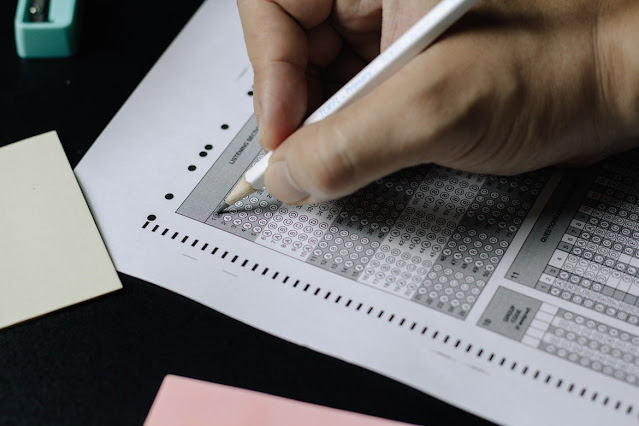Do you hate multiple choice exams? If you don’t know how to face this kind of exam, we are going to explain how to study and how to prepare for it, and a series of tips to solve it with guarantees.
Of all the types of exams that you will find in your life, multiple choice exams are, perhaps, the ones that command the most respect. They are apparently simple exams, which can be passed “by answering at random” (or so the gossips say), but which can become incredibly complicated and unfair.
Studying for a multiple choice exam has its peculiarities. It is not necessary to memorize all the material, because the correct answer is always in sight. But it is necessary to master the subject in depth, to understand it in its entirety. And, deep down, you must memorize definitions, formulas, specific data…
How do I study for a multiple choice exam?
Studying well is always a guarantee of success. Avoiding falling into obviousness like this, studying for a test type exam requires different processes than those of a traditional exam. The reason is that we will need to pull on our recognition memory , rather than recall memory.
In each question you will have the correct answer, so you must identify it. How? In two main ways: knowing the concept that you are asked; and ruling out wrong answers.
Knowing the concept implies not only understanding what we are being asked, but knowing how to identify exactly what each answer means, and if it is exactly what is being asked. That’s the “trick” of multiple choice exams, and the most difficult ones will bait you with several seemingly valid answers that differ in wording. An adverb could provide the exact nuance that makes one answer correct, and the others incorrect.
There are millions of ways to prepare for a multiple choice exam . Okay, not millions, but a few. Let’s see them:
• Practice active study , that is, always identify the key concept, isolate it and learn it well.
• The concept is essential. When reading the topics, scan and write down the relevant information (in fact, stick to the essentials and eliminate the “chaff”). It is essential to understand the subject very well.
• Identify potential test questions as you study. This is something you’ll perfect as you gain experience, but do that exercise early on. This way you will integrate the mechanics of the exam without even realizing it.
• Make study cards by writing the statement on one side and the correct answer on the other. This technique makes studying more enjoyable and has been proven to be very effective for preparing multiple choice exams.
• Practice with old exams . Try to get them somehow, and from time to time put on a timed exam. Sometimes, even, questions are repeated between exams of different calls.
• Be clear about the concepts, but also be clear about what they are not . That is, while you study, write down what a certain concept is not. Something that can help you understand this is to think about the following: if it rains, the ground gets wet. It’s totally clear, right? But if I tell you that the ground is wet, is it because it has rained?
Not necessarily . The same thing happens with many concepts that you will find in the study, and you must be very clear about what they refer to and what they imply, as well as the opposite.
Pass a multiple choice exam
You already know that studying does not imply passing , necessarily. Sometimes you need a bit of luck, sometimes a technique, sometimes a trick to get you going.
We are going to see different ways to face a test type with certain guarantees. You will know that there are different exam modalities , which we can summarize as follows:
• Wrong answers do not penalize.
• Wrong answers and unanswered questions penalize a fraction of what the correct ones bring.
• Wrong answers are penalized, but unanswered questions have no influence.
In the first case, answering all the questions is imperative; in the third, if you don’t know an answer, leave it blank; the second case is the most difficult. Imagine that each incorrect answer or unanswered question subtracts a third of what a correct answer adds.
In that case, for every sure correct answer , you have three possible questions that you can fail. If the exam has 20 questions, you need 10 correct and no incorrect or blank questions to pass (in the case of three, no incorrect is enough). If you get 11 (safe) right, you have a margin of three more to get right without failing; if there are 12 sure, you add three more, and so on.
That said, we leave you the decalogue of keys to face a test type exam with guarantees :
• First the obvious: get ready.
• Read the exam instructions. This way you will know the time you have; what is allowed and what is not; how successes, abstentions and errors are scored.
• Read each question carefully . Make a first calm reading of all the questions, marking those that you know for sure, those that «almost sure» and the difficult ones a priori .
• Answer the easiest questions first. Go writing down the score you have secured separately.
• Go on to answer the ones that generated some doubt, but that you think you will know how to solve. If you get stuck on one, pass it to the group of difficult ones and move on to the next question.
• Once you’ve confidently answered all the ones you already knew you could get right, tally up your score and, depending on the type of exam it is, tally up how many more difficult questions you could try so that, worst case, the subtraction of points does not cause you to fail the exam.
• Always review! But keep in mind that, many times and if we are well prepared, the instinct will not fail.





